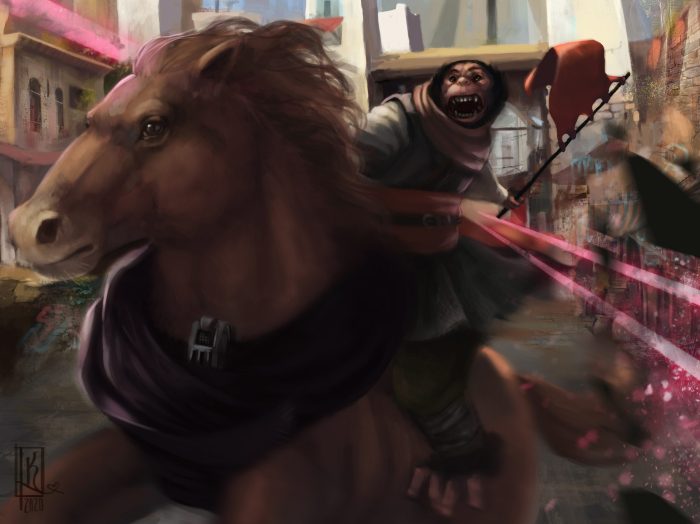Embark on a comprehensive exploration of Kaatz PLS 101 Chapter 6 Congress, delving into the intricate powers, structure, and functions of the legislative branch of the United States government. This chapter provides a thorough examination of Congress’s role in shaping laws, overseeing the executive branch, and representing the interests of American citizens.
Congress, composed of the House of Representatives and the Senate, holds a central position in the American political system. Its responsibilities encompass passing laws, conducting investigations, and approving presidential appointments, making it a critical institution in the nation’s governance.
Congressional Powers and Responsibilities

The United States Congress, the legislative branch of the U.S. federal government, derives its powers and responsibilities from Article I of the U.S. Constitution. Congress is vested with a wide range of powers, including the authority to pass laws, declare war, and oversee the executive branch.
Passing Laws
One of the most important powers of Congress is the ability to pass laws. Congress has the exclusive power to make laws on certain subjects, such as taxation, interstate commerce, and foreign affairs. The process of passing a law begins with the introduction of a bill in either the House of Representatives or the Senate.
If the bill is passed by both chambers of Congress, it is sent to the President for signature. If the President signs the bill, it becomes law. If the President vetoes the bill, Congress can override the veto with a two-thirds vote in both chambers.
Overseeing the Executive Branch
In addition to its lawmaking powers, Congress also has the power to oversee the executive branch. Congress can investigate the activities of the executive branch, hold hearings, and subpoena witnesses. Congress can also impeach and remove the President, Vice President, and other federal officials for “treason, bribery, or other high crimes and misdemeanors.”
Historical Examples
Throughout history, Congress has exercised its powers in a variety of ways. For example, Congress passed the Declaration of Independence in 1776, which declared the United States’ independence from Great Britain. Congress also passed the Constitution in 1789, which established the framework for the U.S.
government. In more recent times, Congress passed the Civil Rights Act of 1964, which outlawed discrimination based on race, color, religion, sex, or national origin. Congress also passed the Affordable Care Act in 2010, which expanded health insurance coverage to millions of Americans.
Structure and Organization of Congress

Congress, the legislative branch of the United States government, consists of two chambers: the House of Representatives and the Senate. Each chamber has distinct membership, terms of office, and leadership roles.
House of Representatives
- Membership:435 members, each representing a single congressional district
- Term of Office:Two years
- Leadership:Speaker of the House (presides over the chamber and sets the legislative agenda)
Senate, Kaatz pls 101 chapter 6 congress
- Membership:100 members, two from each of the 50 states
- Term of Office:Six years
- Leadership:President of the Senate (typically the Vice President of the United States), Majority Leader, and Minority Leader
Diagram of Congress
| Chamber | Membership | Term of Office | Leadership |
|---|---|---|---|
| House of Representatives | 435 | Two years | Speaker of the House |
| Senate | 100 | Six years | President of the Senate, Majority Leader, Minority Leader |
Legislative Process

The legislative process in the United States Congress involves several key steps from the introduction of a bill to its eventual enactment into law. It is a complex and often lengthy process that requires cooperation and compromise between the two chambers of Congress, the House of Representatives, and the Senate.The
legislative process begins with the introduction of a bill by a member of Congress. The bill is then assigned to a committee for consideration. Committees play a crucial role in the legislative process, as they conduct hearings, research the issue, and draft amendments to the bill.
After the committee has completed its work, the bill is reported to the full chamber for debate and a vote.If the bill passes the full chamber, it is sent to the other chamber for consideration. The other chamber may pass the bill in the same form, amend it, or reject it.
If the chambers pass different versions of the bill, a conference committee is appointed to reconcile the differences.Once the conference committee has agreed on a compromise version of the bill, it is sent back to both chambers for a final vote.
If both chambers pass the bill, it is sent to the President for his signature. The President can sign the bill into law, veto it, or allow it to become law without his signature.The legislative process can be a long and arduous one, but it is essential for ensuring that laws are carefully considered and debated before they are enacted.
Committees play a vital role in the process by providing expert advice and analysis, and by allowing members of Congress to hear from a variety of stakeholders. Floor debates allow members of Congress to express their views on the bill and to debate its merits.
Conference committees provide a forum for compromise and negotiation between the two chambers.
Significant Legislation Passed by Congress
Congress has passed numerous significant pieces of legislation throughout its history, including the following:
- The Declaration of Independence (1776)
- The Constitution of the United States (1789)
- The Bill of Rights (1791)
- The Louisiana Purchase (1803)
- The Homestead Act (1862)
- The Emancipation Proclamation (1863)
- The Interstate Commerce Act (1887)
- The Federal Reserve Act (1913)
- The Social Security Act (1935)
- The Civil Rights Act of 1964
- The Americans with Disabilities Act (1990)
- The Affordable Care Act (2010)
These are just a few examples of the many significant pieces of legislation that Congress has passed over the years. These laws have had a profound impact on the lives of Americans and have helped to shape the nation’s history.
Representation and Constituent Services

Members of Congress represent their constituents by advocating for their interests and concerns in the legislative process. They serve as a voice for their constituents in Washington, D.C., and work to ensure that their perspectives are heard and considered in policy decisions.
Constituent Services
In addition to their legislative duties, members of Congress also provide constituent services, which are a variety of services that assist constituents with issues related to federal agencies, such as Social Security, Medicare, and veterans’ benefits. These services can include:
- Casework: Helping constituents resolve individual problems with federal agencies.
- Town hall meetings: Holding public meetings to discuss issues and gather input from constituents.
- Newsletter: Sending out regular newsletters to keep constituents informed about their work in Congress.
Advocacy
Members of Congress also advocate for their constituents’ interests by introducing legislation, speaking out on their behalf, and working with other members of Congress to build support for their priorities. For example, a member of Congress from a rural district might advocate for increased funding for agricultural programs, while a member from an urban district might advocate for increased funding for urban renewal projects.
Partisanship and Polarization

Partisanship, the strong identification with and support for a particular political party, has become increasingly prevalent in Congress in recent decades. This heightened partisanship has had a significant impact on the functioning of Congress, making it more difficult for lawmakers to compromise and pass legislation.
Polarization, the divergence of political views between opposing sides, has further exacerbated the challenges facing Congress. As the two major parties have become more ideologically distinct, it has become increasingly difficult for them to find common ground. This polarization has led to gridlock and a lack of productivity in Congress.
Examples of Partisanship in Recent Congressional Debates
Examples of partisanship playing a role in recent congressional debates include the following:
- The debate over the Affordable Care Act, with Republicans largely opposing the legislation and Democrats largely supporting it.
- The debate over tax cuts, with Republicans supporting cuts and Democrats largely opposing them.
- The debate over gun control, with Republicans largely opposing stricter gun control measures and Democrats largely supporting them.
Congressional Ethics and Accountability
Congressional ethics and accountability are essential to maintaining public trust in the legislative branch. Members of Congress are held to high ethical standards to ensure they act in the best interests of their constituents and the nation.The House and Senate Ethics Committees play a crucial role in enforcing these ethical standards.
They investigate allegations of misconduct, recommend disciplinary actions, and ensure members comply with ethical guidelines.
Ethical Controversies Involving Members of Congress
Throughout history, several ethical controversies have involved members of Congress. These include allegations of insider trading, campaign finance violations, and sexual harassment. In recent years, controversies have centered on conflicts of interest, financial improprieties, and abuse of power.
Expert Answers: Kaatz Pls 101 Chapter 6 Congress
What are the key powers granted to Congress?
Congress holds the authority to make laws, declare war, raise and support armies, regulate commerce, and impeach the president.
How is Congress structured?
Congress consists of two chambers: the House of Representatives and the Senate. The House has 435 members, while the Senate has 100 members.
What is the legislative process?
A bill must pass both chambers of Congress and be signed by the president to become a law. The process involves committee hearings, floor debates, and conference committees to reconcile differences between the House and Senate versions of the bill.